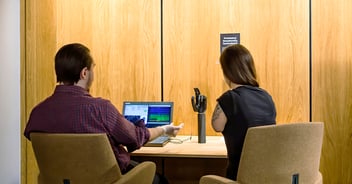Prosthetic Fitting Guide for Amputees Part 1: When to Start and Why Early Matters
Successful long-term use of a bionic hand starts with a smart, well-timed fitting process. For clinicians working with the Zeus bionic hand or other advanced upper limb devices, staying grounded in current research and proven best practices is essential. This guide is here to support our community in navigating one of the most important questions in prosthetic care: When should fitting begin, and why does starting early make such a difference?
When to Start Prosthetic Fitting
Ideally, prosthetic fitting should begin during the “golden period” of recovery after an amputation. Beginning the fitting process within 30 days is linked to reduced phantom limb pain, better prosthesis acceptance, improved muscle adaptation, and overall shorter rehabilitation time.
Early fitting requires both wound healing and patient readiness. When the clinician is satisfied that both of these are progressing well, prosthetic adoption is given the best possible chance of success. (Sources: Esquenazi et al., 2004; Biddiss & Chau, 2007; Resnik et al., 2012)
Cosmetic or Functional First?
Some clinics begin with a light cosmetic or passive prosthesis, especially in situations when the patient is not yet ready for motor control and needs more time to adjust to the feeling of a prosthesis.
Still, research shows that starting with a basic myoelectric prosthesis, even a simple one, can lead to better long-term outcomes by supporting muscle control and brain adaptation. (Sources: Biddiss & Chau, 2007; Selles et al., 2002)
Phases of Prosthetic Fitting
|
Phase |
Recommendation |
Rationale |
|
Immediate Post-Op (0–30 days) |
Focus on wound care and desensitization |
Prepares for fitting |
|
Early Phase (1–3 months) |
Fit a passive or basic myoelectric prosthesis |
Supports brain plasticity and function |
|
Later Phase (3+ months) |
Upgrade to advanced myoelectric or multi-grip devices |
Patient is physically and mentally ready |
Getting fitted for a prosthetic hand isn’t just a medical process; it’s a journey. Whether you're an amputee, a caregiver, or a clinician supporting someone through this process, understanding the stages of prosthetic fitting can make a huge difference.
The fitting journey typically follows three stages:
1. Preparation - healing the wound and maintaining range of motion:
Evidence shows that the best chance at a successful transition to an upper limb prosthesis begins early, ideally within 30 days of amputation, once the wound has healed. After surgery, care focuses on wound healing, shaping the limb for prosthesis use, and early exercises.
2. Protection - using a temporary prosthesis and gradually increasing daily activities:
Starting with a passive prosthesis can support both physical and emotional adjustment before moving on to active systems. As the patient becomes ready, they begin training muscle control for a basic myoelectric prosthesis, eventually advancing to more complex, multi-articulating hands.
3. Adaptation - learning to use a functional prosthesis and refining movements:
The final phase involves integrating the prosthesis into daily life—at home, at work, and in social settings—while long-term success depends on regular maintenance and follow-ups to ensure the device continues to meet the user’s needs.
No two prosthetic journeys look the same. What matters most is having a plan, a supportive team, and tools that meet you where you are. Starting early, moving step by step, and staying connected with your care team can help make the transition smoother and more successful. The goal isn’t just to wear a prosthesis, it’s to use it confidently in real life.
As technology like the Zeus bionic hand evolves, so should our approach to rehabilitation. By starting early and following a structured path, we help patients adjust to life after amputation and to enjoy a life that allows them to thrive. We’re committed to supporting clinicians every step of the way with tools, training, and insight that put patients first. For more information on how our technology is changing the game in supporting our patients, stay tuned for our next blog.










.jpg?width=352&name=a-1%20(2).jpg)